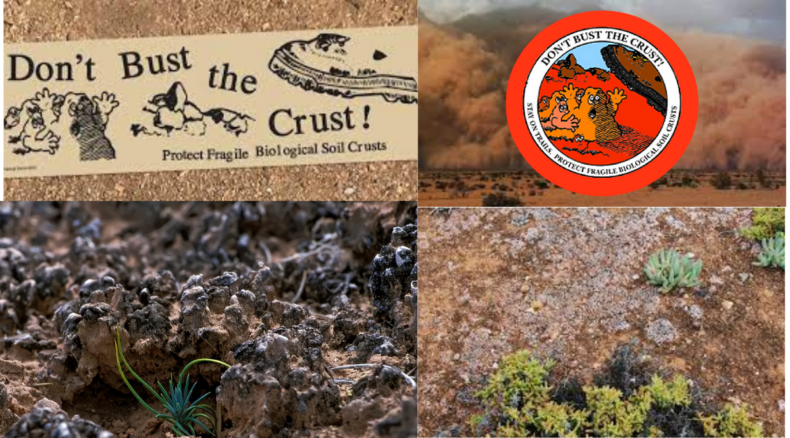What are Biocrusts?
Biological soil crusts are communities of living organisms on the soil surface in arid and semi-arid ecosystems. “Biocrusts the best weapon”. They are found throughout the world with varying species composition and cover depending on topography, soil characteristics, climate, plant community, microhabitats, and disturbance regimes. In the unceasing battle against dust, humans possess a deep arsenal of weaponry, from microfiber cloths to feather dusters to vacuum cleaners. But new research suggests that none of that technology can compare to nature’s secret weapon — biological soil crusts. These are thin, cohesive layers of soil, glued together by dirt-dwelling organisms that often carpet arid landscapes. “Biocrusts the best weapon”.

How they are useful?
Biological soil crusts — a community of microbes, lichens and non-vascular plants living on the soil surface that is primarily located in dry lands — may reduce global dust emissions by 55%, preventing the release of approximately 700 million tonnes of dust every year. Biological soil crusts or bio crusts are comparable to the living skin of global dry lands, covering 12% of land surface worldwide and reducing soil erosion by increasing soil stability. This stabilization effect can reduce dust emissions in small-scale wind-controlled experiments. However, the extent to which affect the global cycle of atmospheric dust — a type of aerosol with significant effects on our climate — is, as of yet, unknown. And since most of the world’s dust comes from dry lands, They are important for keeping dust bound to the ground. Fallen dust can carry nutrients that benefit plants, but it can also reduce water and air quality, hasten glacier melting and reduce river flows. For instance in the Upper Colorado River Basin, researchers found that dust not only decreased snow’s ability to reflect sunlight, but it also shortened the duration of snow cover by weeks, reducing flows of melt water into the Colorado River by 5 percent. Experiments had already demonstrated that biocrusts strengthened soils against erosion.

Conclusion
Dry-land ecosystems, such as savannas, scrublands and deserts, may appear barren, but they’re providing this important natural service that is often overlooked. Influence on global dust cycling and associated climatic effects have important implications for human health, biogeochemical cycling, and the functioning of ecosystems. Preserving and restoring biocrusts will be key to mitigating soil erosion and dust production in the future. Therefore, they state, these findings suggest the need to consider biocrusts as a key player in global change.
Social Media headings –
- Biocrusts reduce dust
- Global dust emission by biocrusts













